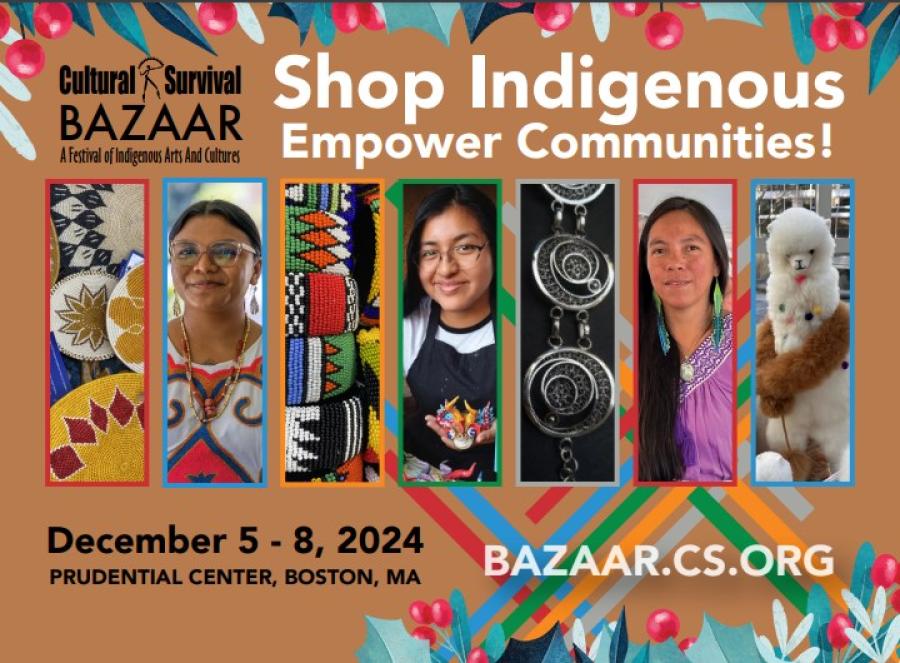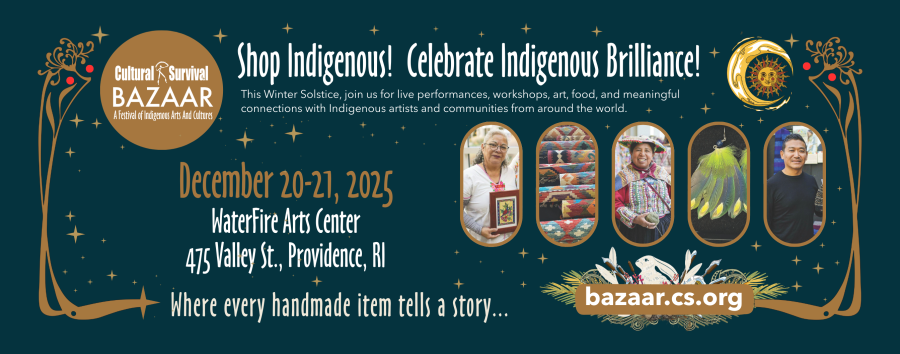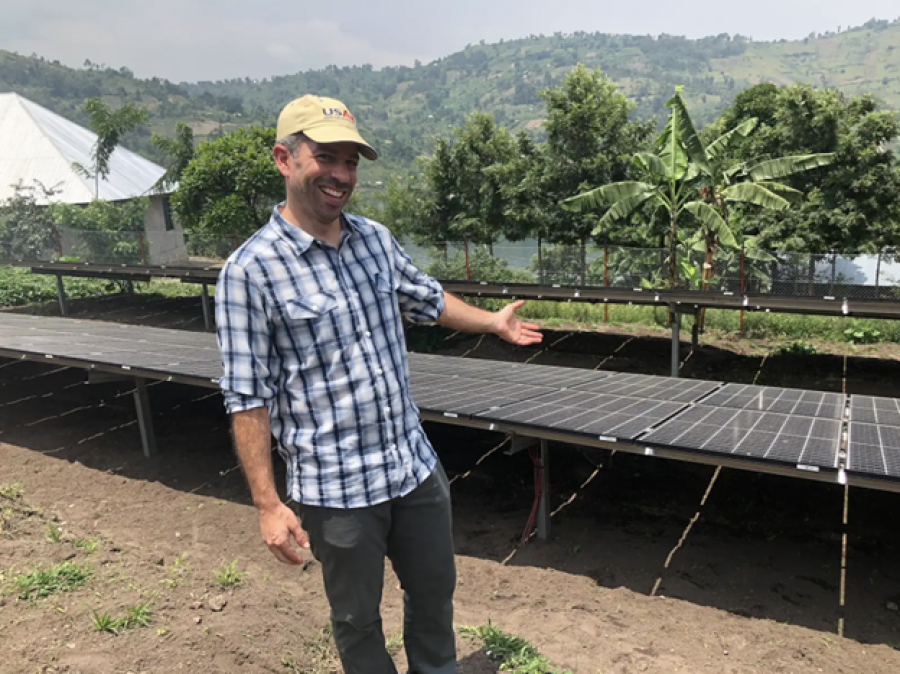
Black History Month begins in the United States. Like Native American Heritage Month (November), Oaxacan Heritage Month (July/August), and Indigenous Peoples’ Day (October), I celebrate the awareness those months and that day bring about Black and Indigenous Peoples and histories, the steps it has taken for our respective and intersecting histories to be recognized by the same nation that inflicts its violence on us.
I reflect on the collision between Black and Indigenous people on what is now the United States and Mexico. Black people and Indigenous people were displaced from their homelands, used to the benefit of what would become these nations. Eventually Oaxacan Indigenous Peoples' migration to Tongva land in Los Angeles and throughout California would intersect with Black urban and rural lives. I am reminded of how our lives bond together here, far from our ancestral homelands, when I step foot in South Central Los Angeles, where the sound of Mayan and Oaxacan Indigenous celebrations can be heard and seen among Black voices and years of Black community building. In Yokuts and Chumash territory (rural Lamont, California), where Na Ñuu Savi (People from the Place of Rain) from Ñuu Xnuviko (The Place Where the Clouds Descend) gather yearly to celebrate their patron saint festival, these reminders of our life together are also present in the couples and families that arrive with each other to celebrate the life of our hometown despite our distance from Oaxaca, Mexico.
But the United States is not the first place where Black and Oaxacan Indigenous people have made contact with each other. In Oaxaca’s coastal region of Ñuu Savi (the Place of Rain), where Black enslaved people, whom the Spanish forcibly brought with them to sustain what is now Mexico, are towns where Black Na Ñuu Savi live, their celebrations and resistance woven together by Black and Na Ñuu Savi influences. On that border that separates the United States and Mexico our lives intersect as Black migrants and Indigenous migrants await the possibility of crossing over to the other side, the violence they have lived exacerbated by policies like the Remain in Mexico program and anti-Blackness and anti-Indigeneity in Mexico. For those that are able to cross over, the violence doesn’t end. In 2019 on Choctaw territory, just outside of Jackson, Mississippi, one of the largest ICE raids in history occurred across seven food-processing plants, and many Mayan migrants from Mexico and Guatemala were forced into detention centers after predatory employers took advantage of language barriers and immigration statuses to hire people to work under unjust conditions.
These plants were first dominated by white workers; as the area changed due to civil rights upheavals, the dominant workers became Black, and as the greedy owners of these plants searched for cheaper labor, the workers started coming from Latin America. Entire families were separated in hours. It was as if a tornado had suddenly appeared, taking with it the presence of beloved family members, leaving within the standing houses of rural Mississippi children, others who avoided detention, and the destructiveness of uncertainty as workers were bussed to detention centers. In that destruction, Black, Latinx, and Indigenous families would find unity and support as they hoped for the return of community members. All this to say that while the United States and Mexico have tried to abuse and erase our presence in these countries, we have built generations of communities and resistances separately and together across geographies forced upon us.
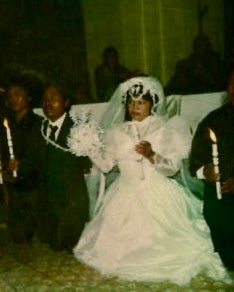
Claudio Hernandez s mom and dad's wedding in 1993.
February 14
Valentine’s Day. Although this day is filled with consumerist ideals of what it is to love and be loved, I reflect on my parents, my family, and the communities of Na Ñuu Xnuviko in the United States. Papa asked for Mama’s hand in marriage when she was 20 and he was 24. Their marriage involved the tying of white lillies between their families, signifying a union that would not just bring families together, but a union that would also fortify the community. About 30 years later they have built—through migration, the support, and fortification of their union—a family with four sons, one daughter, a son-in-law, and three grandchildren. In my 29 years of life, I am reminded of all the community events that have served to strengthen myself, my siblings, my parents, and every person of Ñuu Xnuviko in the homeland and the United States. To love platonically in Tu’un Savi is to ku ino na (to have others present in our inner being or psyche). To love romantically is to ta’an ino na (to feel another’s presence paired with our inner being, to feel them as if the two of us are one). Both of these phrases imply awareness and work, to be aware of how one’s inner being behaves towards the other, and to work towards sustaining each other, platonically and romantically, as life moves forward. Through every birth, baptism, communion, wedding, and funeral, the people of Ñuu Xnuviko gather to sustain each other; this is how we have survived generations of trauma and displacement over time. I think of how far my family has come because we and the surrounding community have held each other in our inner being. I am reminded of Assata Shakur’s words, “We must love each other and support each other.”

Maritza dancing at her birthday celebration in a Tehuana, a dress traditionally worn by Isthmus Zapotec women and Muxes.
February 18,
I met Maritza Sanchez in October of 2017 after we were invited to a panel on decolonizing queer identities organized by Noe Lopez through the Mixtec/Indigenous Community Organizing Project in Oxnard. Maritza identifies as Muxe. That day she invited me to attend this November’s Vela Muxe, a celebration of Muxe people originating in Oaxaca and brought to Los Angeles through the labor of Muxe migrants and their allies. The first time I attended a queer event was at a candlelight vigil held after many queer youth on separate occasions completed suicide due to relentless homophobic and transphobic bullying. I looked around the Vela and uttered the same words I uttered the day of the vigil, “Wow, there are so many.” To Indigenous Oaxacans, protests somehow become fiestas because the power of communality and mutual benefit brings us together for both. The Vela’s survival and the survival of queer Indigenous people miles away from the homeland, despite homophobia and transphobia from two nations, is both an act of protest and a celebration. On February 18, 2023, Maritza’s friends celebrated her 50th birthday at a banquet hall in Koreatown, Los Angeles. Her friends and family recounted her work amongst each other and through the loudspeaker, and we danced until midnight in huipiles and trajes regionales.
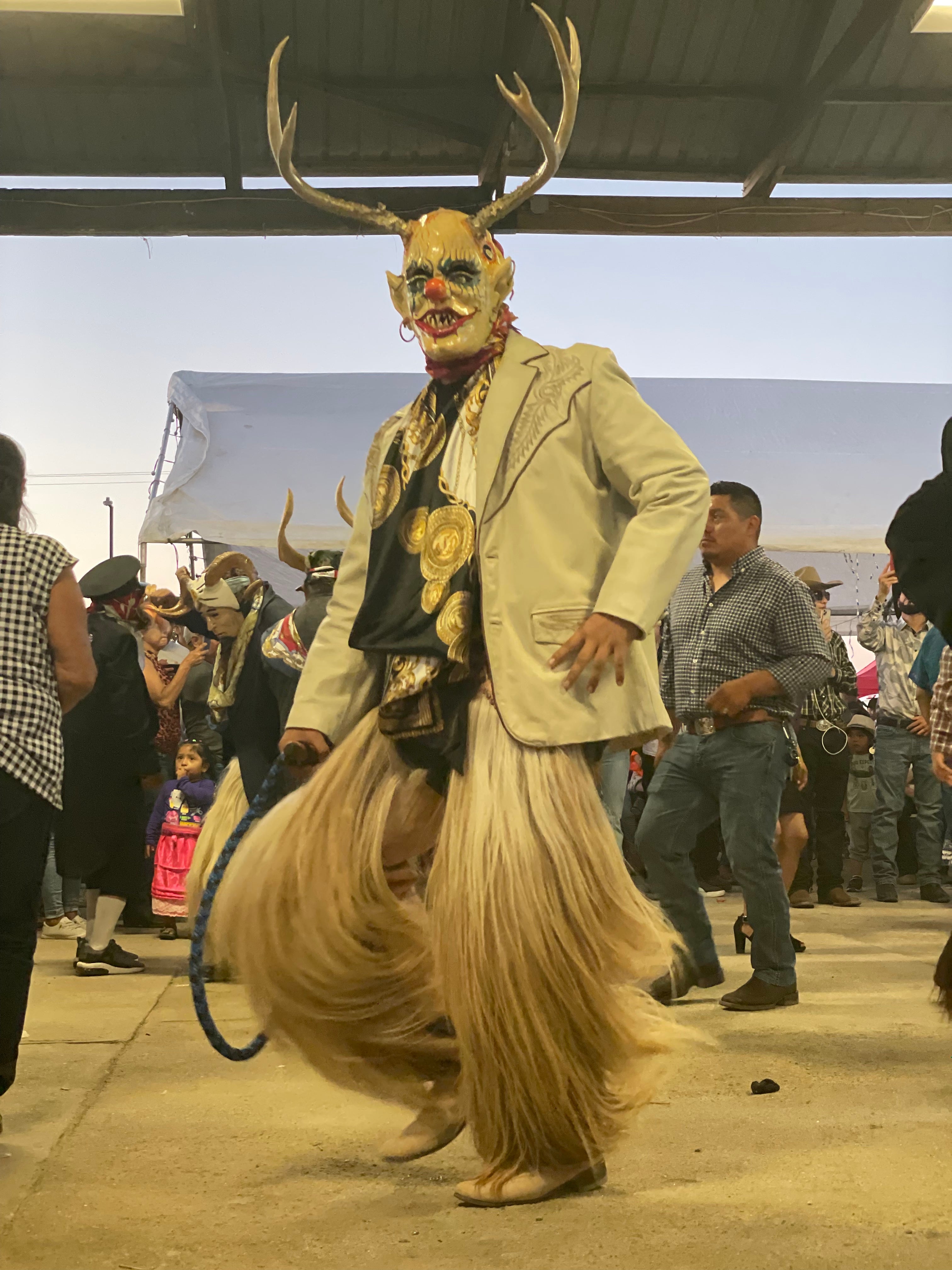
Diablo dancing at the Ñuu Xnuviko Patron Saint Festival in Lamont, CA. The Patron Saint Festival is a site of Indigenous linguistic resistance because it is organized mostly in Tu'un Savi. Among the murmurs in the crowd one can hear the multilingual landscape of Mixtec migrants and their families. The Diablo is part of a dance called la Danza de Los Diablos which has African roots and was celebrated in honor of a god named Ruja who Black enslaved people would pray to for relief from enslavement by the Spanish. The Danza de los Diablos eventually mixed with Catholic and Mixtec traditions becoming what it is now across different Mixtec towns.
February 20: Day of Mother Tongue
On this day, we celebrate the first language each of us and the respective communities we form from speaking our mother tongues. When I was born, Mama and Papa were monolingual. My first language is Tu’un Savi (the Language of the Rain) because it was spoken to me by everyone in my surrounding. It is a language with more than 80 variants, mostly tied to towns and municipalities across Ñuu Savi, sometimes mutually intelligible and sometimes not. Many sukuachi ñoó (children of our hometown) are raised speaking and understanding Tu’un Savi until we begin to experience life outside our community. Tu’un Savi’s different variants are all at various stages of endangerment; the waning number of speakers is marked by the racism Indigenous people experience across Mexico and the United States. We are unconsciously taught to place Spanish and English before Tu’un Savi, if Tu’un Savi is even a consideration at all.
When I was born, Mama had birth complications she did not understand. What she remembers is thinking she was going to die, so she conveyed to my Dad all her wishes for our health and safety after her passing. Her thoughts were not just the result of the pain she was feeling but also not understanding the language the doctors and nurses around her were speaking. She slowly learned Spanish to communicate with Spanish speaking staff in Latinx California. She’d place her trust in me as an interpreter where she could not find the right words in Spanish and where she could not find any words in English to express her and Dad’s needs or concerns, where I went to school, and where they handled matters related to their health, immigration status, and work.
Being trilingual was central to my upbringing and my role as the firstborn child of migrants. For my siblings this role was very passive, so they did not speak Tu’un Savi. At school, to be Oaxacan was a reason to be teased by our Mexican classmates, so it wasn’t until much later when they would try to speak to communicate with our Matsanu (grandmother). We learned to speak Spanish and English at school but to keep Tu’un Savi locked away at home and in the community. Some would learn it was best not to speak it at all. It is through this last sentiment that a gap begins to widen where our grandparents are monolingual Tu’un Savi speakers, our parents are bilingual Tu’un Savi/Spanish speakers, and those in my generation are mostly monolingual or bilingual English/Spanish speakers. In several generations this language may cease to exist because we do not acknowledge language diversity in every aspect of human life, and there is minimal attention to Indigenous languages. In generations to come, the path forward for the survival of Tu’un Savi is paved with work in which we value Indigenous languages as crucial to our well being as people, because the two depend on each other.
— Claudio Hernandez (Na Ñuu Savi/Mixtec) is a 2022–2023 Cultural Survival Writer in Residence.
All photos courtesy of Claudio Hernandez.
